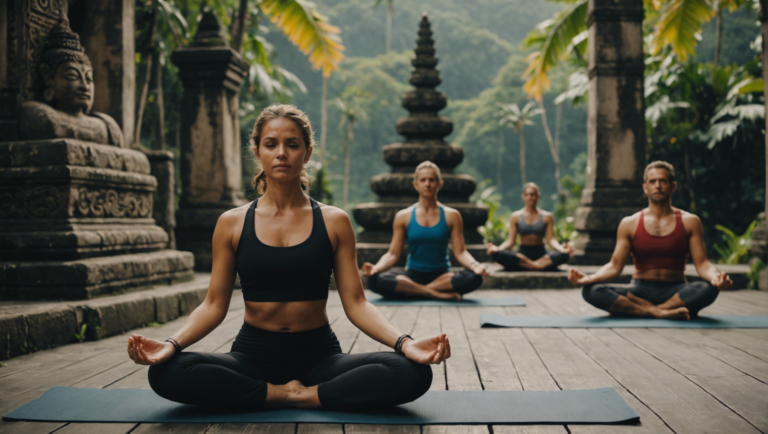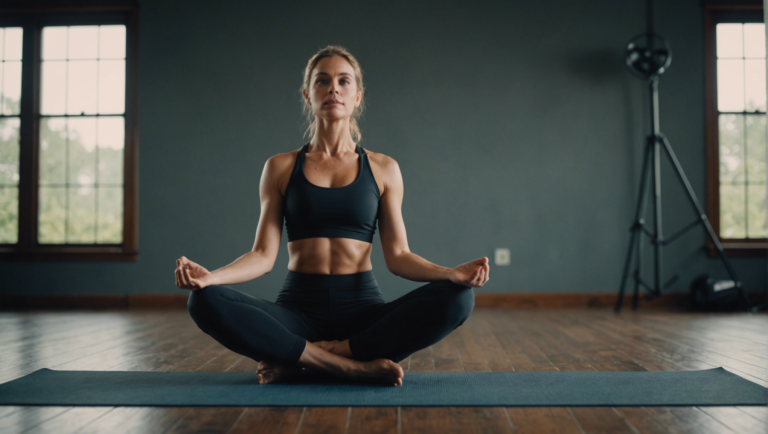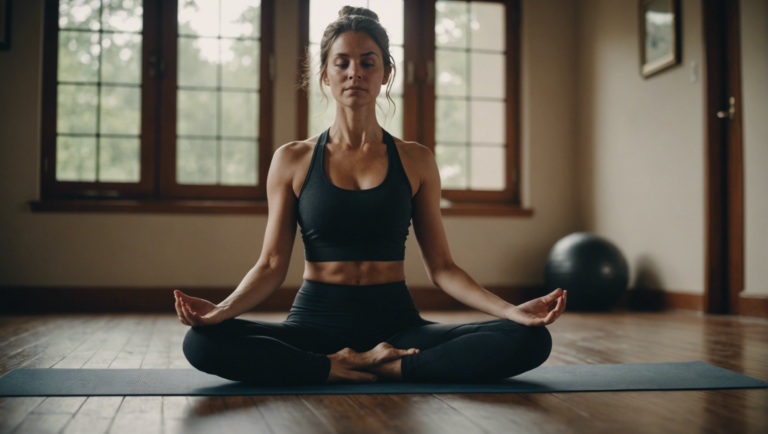Guidelines To Understanding What Yoga Pants Are Made Of
Understanding the Importance of Fabric Composition in Yoga Pants
When it comes to choosing the right yoga pants, understanding the fabric composition is essential for both comfort and performance during your practice. The materials from which yoga pants are made can significantly impact your overall experience, from breathability and flexibility to moisture-wicking properties. Let’s delve into the guidelines to better understand what yoga pants are made of.
The Role of Fabric Composition in Yoga Pants
The fabric composition of yoga pants plays a crucial role in determining their quality and functionality. Different materials offer various benefits, so it’s essential to know what to look for when selecting the ideal pair for your yoga sessions.
Common Materials Used in Yoga Pants
-
Nylon: Nylon is a popular choice for yoga pants due to its durability and flexibility. It offers excellent shape retention, making it ideal for intense yoga poses that require stretch and movement.
-
Polyester: Polyester is known for its moisture-wicking properties, making it a great option for hot yoga or high-intensity workouts. It is also quick-drying, which helps keep you comfortable during your practice.
-
Spandex: Spandex, also known as Lycra or elastane, is added to yoga pants to provide stretch and elasticity. It allows for freedom of movement and helps the pants retain their shape after repeated wear.
-
Cotton: While less common in yoga pants, cotton is a breathable and soft material that can be comfortable for light yoga practices or casual wear. However, it may lack the stretch and moisture-wicking capabilities of synthetic fabrics.
Choosing the Right Fabric for Your Needs
When selecting yoga pants, consider the type of yoga you practice and your personal preferences. If you prefer high-intensity workouts, opt for moisture-wicking fabrics like polyester. For styles that require a lot of movement, such as Vinyasa or Ashtanga, look for pants with spandex for enhanced flexibility.
Additional Features to Look For
In addition to fabric composition, consider other features that can enhance your yoga experience:
-
Waistband: A supportive waistband can provide comfort and help keep your pants in place during challenging poses.
-
Seams: Flat seams or seamless construction can reduce chafing and irritation, allowing you to move freely without distractions.
-
Gusset: A gusseted crotch offers added flexibility and durability, allowing for a wider range of motion without compromising the integrity of the pants.
Understanding what yoga pants are made of empowers you to make informed choices based on your preferences and needs. By considering fabric composition, along with additional features, you can find the perfect pair of yoga pants that not only look great but also support you in your practice.
Exploring Sustainable Materials Used in Yoga Pant Production
Exploring Sustainable Materials Used in Yoga Pant Production
Yoga pants have become a popular choice for workout attire, casual wear, and even lounging around the house. As more individuals adopt an active lifestyle, the demand for yoga pants has increased significantly. However, with the rise in demand comes a responsibility to create these garments in a sustainable and eco-friendly manner. Understanding the materials used in yoga pant production is crucial for consumers who want to make informed choices that align with their values.
Importance of Sustainable Materials in Yoga Pant Production
Sustainability has become a key consideration in the fashion industry, including activewear. When it comes to yoga pants, the focus is not only on comfort and style but also on the environmental impact of the materials used. By choosing yoga pants made from sustainable materials, consumers can reduce their carbon footprint and support eco-conscious practices in the fashion industry.
Organic Cotton
One of the most common sustainable materials used in yoga pant production is organic cotton. Unlike conventional cotton, which is grown using harmful pesticides and synthetic fertilizers, organic cotton is grown using natural methods that have lower environmental impact. Organic cotton yoga pants are not only gentle on the skin but also on the planet.
Recycled Polyester
Another popular sustainable material in yoga pant production is recycled polyester. This innovative fabric is created by recycling PET bottles and other plastic waste, diverting them from landfills and oceans. Recycled polyester yoga pants are durable, moisture-wicking, and offer excellent stretch, making them ideal for yoga and other activities.
TENCEL™ Lyocell
TENCEL™ Lyocell is a sustainable material derived from wood pulp, commonly sourced from eucalyptus trees. The production process of TENCEL™ Lyocell is known for its closed-loop system, which recycles water and solvents, minimizing waste and environmental impact. Yoga pants made from TENCEL™ Lyocell are not only soft and breathable but also biodegradable.
Hemp
Hemp is a versatile and sustainable material that has been used for centuries in textile production. Hemp yoga pants are known for their durability, breathability, and antibacterial properties. Hemp cultivation requires minimal water and no pesticides, making it an eco-friendly choice for consumers looking for sustainable activewear options.
As consumers become more conscious of the environmental impact of their purchasing decisions, the demand for sustainable yoga pants continues to grow. By opting for yoga pants made from organic cotton, recycled polyester, TENCEL™ Lyocell, hemp, or other sustainable materials, individuals can contribute to a more sustainable and eco-friendly fashion industry. Choosing sustainable materials is not only beneficial for the planet but also for the well-being of individuals and communities worldwide.
The Evolution of Yoga Pants Fabric Technology
Yoga pants have become a staple in modern activewear, offering both comfort and style for various activities beyond just yoga. The evolution of yoga pants fabric technology has played a significant role in enhancing the overall experience for wearers. From traditional cotton leggings to modern moisture-wicking fabrics, understanding the materials used in yoga pants can help you make informed decisions when selecting the ideal pair for your needs.
The Beginnings of Yoga Pants Fabric Technology
In the early days of yoga practice, individuals typically wore simple cotton leggings or sweatpants. While these options provided basic coverage, they often lacked the flexibility and moisture-wicking properties necessary for intense physical activities. Cotton, while soft and breathable, tends to absorb moisture easily, leading to discomfort during workouts.
Introduction of Synthetic Fabrics
With advancements in textile technology, synthetic fabrics like polyester and nylon started to gain popularity in activewear, including yoga pants. These materials offered improved moisture management, durability, and stretch, making them ideal for yoga practice and other forms of exercise. Polyester, in particular, became a popular choice due to its moisture-wicking properties and quick-drying capabilities.
Evolution of Performance Fabrics
As the demand for activewear increased, so did the need for more specialized performance fabrics. Today, you can find yoga pants made from innovative materials like spandex, Lycra, and elastane. These fabrics provide excellent stretch and shape retention, allowing for freedom of movement without becoming stretched out or losing their form over time.
Sustainable Fabric Options
In recent years, there has been a growing trend towards sustainable and eco-friendly yoga wear. Materials such as organic cotton, bamboo fabric, and recycled polyester are being used to create yoga pants that are not only comfortable and functional but also environmentally conscious. These sustainable fabrics offer the same performance benefits as traditional activewear materials while reducing the overall impact on the planet.
Choosing the Right Fabric for Your Needs
When selecting yoga pants, consider the intended use and your personal preferences. If you prioritize comfort and breathability, opt for cotton or bamboo fabric. For high-intensity workouts that involve a lot of sweating, choose moisture-wicking materials like polyester or nylon. If you value flexibility and stretch, look for pants made with spandex or elastane blends.
The evolution of yoga pants fabric technology has come a long way, offering a wide range of options to suit different preferences and needs. Whether you prefer traditional natural fibers or cutting-edge performance fabrics, there is a pair of yoga pants out there for you. By understanding the materials used in yoga pants, you can make informed choices that enhance your comfort and performance during workouts.
Key Factors to Consider When Choosing Yoga Pants Based on Material
Yoga pants are a staple in many active individuals’ wardrobes, offering comfort and flexibility during workouts, yoga sessions, or even as casual wear. When selecting the perfect yoga pants, one of the most crucial factors to consider is the material they are made of. The fabric not only determines the comfort and fit of the pants but also affects their durability and overall performance during various activities. Here, we delve into the key factors to consider when choosing yoga pants based on their material.
Understanding Different Materials for Yoga Pants
Yoga pants come in a variety of materials, each offering unique benefits and features. Common fabrics used in yoga pants include:
-
Cotton: Cotton yoga pants are soft, breathable, and comfortable. They are perfect for low-impact activities and casual wear. However, cotton has less stretch compared to other materials, which may limit flexibility during intense workouts.
-
Spandex or Lycra: Spandex, also known as Lycra, is a stretchy and form-fitting material commonly blended with other fabrics like polyester or nylon. Yoga pants with spandex offer excellent stretch and shape retention, making them ideal for activities that require flexibility.
-
Nylon: Yoga pants made of nylon are known for their durability and moisture-wicking properties. Nylon fabrics are lightweight and quick-drying, making them a popular choice for intense workouts and hot yoga sessions.
-
Polyester: Polyester yoga pants are lightweight, durable, and wrinkle-resistant. They are excellent at wicking moisture away from the body, making them suitable for high-intensity workouts and outdoor activities.
Factors to Consider When Choosing Yoga Pants Based on Material
1. Comfort and Flexibility
The material of yoga pants significantly impacts comfort and flexibility during physical activities. Consider fabrics like spandex or a blend of cotton and spandex for optimal stretch and ease of movement. Look for materials that feel soft against the skin and provide a comfortable fit throughout your yoga practice or workout.
2. Moisture-Wicking Properties
If you engage in activities that result in sweating, opt for yoga pants with moisture-wicking properties. Fabrics like nylon and polyester are excellent at drawing moisture away from the skin, keeping you dry and comfortable during intense workouts or hot yoga sessions.
3. Durability and Longevity
Choose yoga pants made of durable materials that can withstand frequent washing and wear. Fabrics like nylon and polyester are known for their longevity and resistance to wear and tear, ensuring that your yoga pants maintain their shape and performance over time.
When selecting the perfect yoga pants, the material plays a vital role in determining comfort, flexibility, and performance. By understanding the characteristics of different fabrics and considering factors like comfort, moisture-wicking properties, and durability, you can choose yoga pants that enhance your workout experience and provide long-lasting wear. Prioritize quality materials that suit your individual needs and preferences to make the most of your yoga practice or active lifestyle.
Debunking Common Myths About Yoga Pants Materials
Yoga pants have become a staple in many wardrobes, offering comfort and style for various activities, from yoga sessions to casual outings. However, there are several common myths surrounding the materials used to make yoga pants. Let’s delve into these misconceptions and uncover the truth behind the fabrics you often find in yoga pants.
Myth: All Yoga Pants are Made from the Same Material
When it comes to yoga pants, there isn’t a one-size-fits-all approach to materials. In fact, yoga pants can be crafted from a variety of fabrics, each with its own unique characteristics. Some popular materials used in yoga pants include spandex, polyester, nylon, and cotton blends. These materials offer different levels of stretch, breathability, and moisture-wicking properties to cater to diverse preferences and needs.
Myth: Natural Fabrics are Always Superior to Synthetic Ones
While natural fabrics like cotton are breathable and comfortable, synthetic materials like polyester and nylon have their own set of advantages when it comes to yoga pants. Synthetic fabrics often offer better moisture-wicking capabilities, durability, and stretch, making them ideal for intense workouts or hot yoga sessions. The key is to choose a material that suits your specific activities and preferences rather than solely focusing on whether it is natural or synthetic.
Myth: Expensive Yoga Pants are Always Made of High-Quality Materials
Price does not always indicate the quality of the material used in yoga pants. While some high-end brands do use premium fabrics, it is essential to look beyond the price tag and consider factors such as the fabric composition, construction, and intended use. You can find affordable yoga pants made from high-quality materials that offer the same level of comfort and performance as pricier options.
Myth: All Synthetic Fabrics Cause Skin Irritation
While some individuals may experience skin irritation with certain synthetic fabrics, advancements in textile technology have led to the creation of softer and more skin-friendly synthetic materials. Fabrics like spandex and polyester can be designed to be gentle on the skin, breathable, and moisture-wicking, providing comfort during yoga practice. If you have sensitive skin, opt for yoga pants with flat seams and non-abrasive fabrics to minimize the risk of irritation.
Myth: You Can’t Wear Yoga Pants Outside of Workouts
Yoga pants have transitioned from workout essential to versatile athleisure wear that can be styled for various occasions. With the rise of athleisure fashion, yoga pants made from high-quality materials have become a fashionable choice for running errands, meeting friends for coffee, or simply relaxing at home. When paired with the right pieces, yoga pants can effortlessly blend comfort and style in your day-to-day outfits.
Understanding the materials used in yoga pants can help you make informed decisions when selecting the perfect pair for your needs. By debunking these common myths, you can appreciate the diversity of fabrics available and choose yoga pants that not only look great but also provide the comfort and performance you desire. Whether you prefer natural fabrics or high-tech synthetics, there is a wide range of options to explore in the world of yoga pants.
Conclusion
The fabric composition of yoga pants plays a crucial role in not only the performance but also the overall sustainability and comfort of these popular workout garments. Understanding the importance of fabric composition in yoga pants allows consumers to make informed choices that align with their values and needs. By exploring sustainable materials like organic cotton, recycled polyester, and bamboo fabric used in yoga pant production, individuals can contribute to reducing their environmental impact while enjoying high-quality activewear.
The evolution of yoga pants fabric technology has come a long way, with innovative materials such as moisture-wicking fabrics, four-way stretch, and odor-resistant blends enhancing the performance and durability of these garments. By staying informed about the latest advancements in materials and technologies, yoga enthusiasts can stay ahead of the curve and benefit from enhanced comfort and functionality during their practice.
When choosing yoga pants based on material, it is essential to consider key factors such as breathability, moisture-wicking capabilities, durability, and sustainability. By prioritizing materials that offer these features, individuals can ensure that their yoga pants not only enhance their performance but also stand the test of time, reducing the need for frequent replacements and minimizing waste.
It is crucial to debunk common myths about yoga pants materials to help consumers make well-informed decisions. Whether it’s dispelling misconceptions about synthetic fabrics causing skin irritation or clarifying the benefits of natural fibers like bamboo, providing accurate information empowers individuals to choose yoga pants that align with their preferences and values.
In the dynamic world of activewear, staying informed about fabric composition, sustainable materials, and technological advancements is key to making the best choices when it comes to selecting yoga pants. By understanding the significance of fabric composition, exploring sustainable materials, embracing evolving fabric technologies, considering key factors in material selection, and debunking common myths, individuals can elevate their yoga practice while contributing to a more sustainable and conscious activewear industry. Let your yoga pants be a reflection of not just your style and comfort but also your commitment to environmental stewardship and informed consumer choices.


